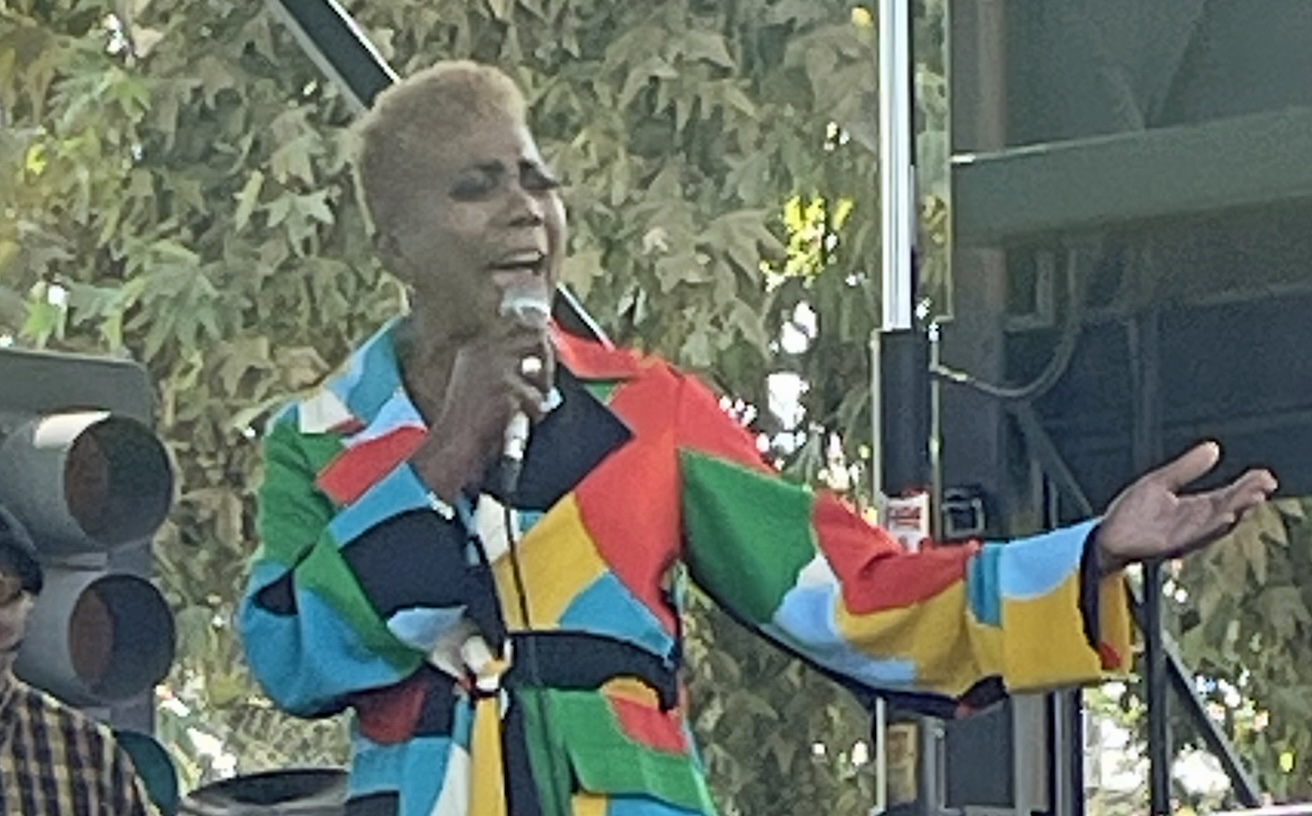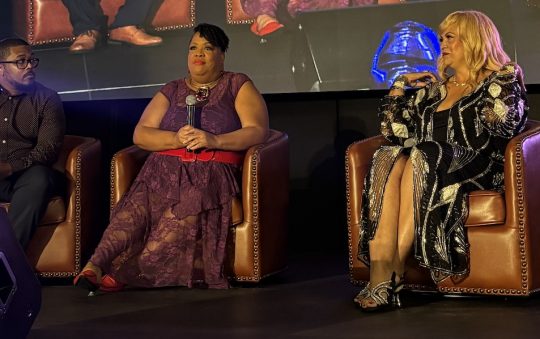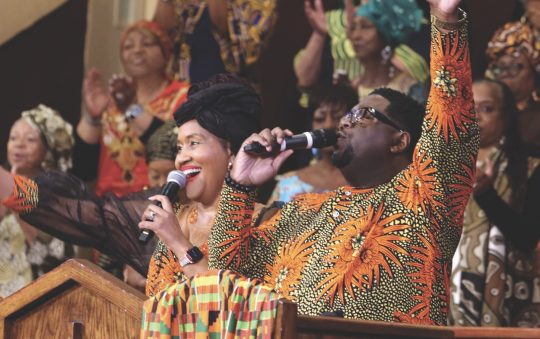
The history of jazz in Los Angeles was celebrated once again in grand style on Saturday, Oct. 21, when the 29th Central Avenue Jazz Festival took place in the historic corridor between MLK Blvd. and Vernon Avenue.
The free, family-friendly event was presented by Councilman Curren D. Price, Jr. and The New Ninth, in conjunction with the Coalition for Responsible Community Development and Concerned Citizens of South-Central Los Angeles.
The festival lineup included the John Beasley Big Band; Chief Adjuah; Las Chikas; Matthew Whitaker; the USC Jazz Ensemble; the Diego-Fernandez Kim Quartet; Michael Mayo; Extra Ancestral featuring Eduardo Palo Cuero; Charles McPherson; and the Devin Daniels Quintet.
Mayor Karen Bass commended Price for his continuing the tradition of the festival and expressed her hopes to share Central Avenue more globally when Los Angeles hosts the 2028 Olympics.
Related Stories:
https://lasentinel.net/west-adams-jazz-festival-draws-big-crowds.html
“I remember my parents tell me all about Central Avenue, the legacy, the history that is here,” said Bass. “I love the fact that the Councilman has made sure we continue the legacy.
“I was in Paris, and what I loved about the Olympics there is that the Olympic spirit was everywhere,” she said. “During the Olympics, I think we should have jazz on Central Avenue. People need to come here… they need to know about Los Angeles as a whole.”

Michael Dolphin, whose father owned Dolphin’s of Hollywood, one of the first Black-owned record stores in Los Angeles, helped kick off the event with KJAZZ’s Jose Rizo, host of “Jazz on the Latin Side.” Dolphin underscored the history that still exists in the area, with landmarks such as the restored Dunbar Hotel.
“This is legitimate,” said Dolphin. “This is the legacy of Black L.A. In the 40s and 50s, you could walk down the street and bump into Duke Ellington, Count Basic, Billie Holliday, or Etta James. It was literally the birthplace of West Coast jazz and West Coast R&B.
“[The history exists] within a generation and that generation is still here,” Dolphin said. “The stories they have to tell are phenomenal. I have to add my voice to that because we need to celebrate this.”
Carmen Lundy, one of the festival headliners this year, shared her perspectives on the legacy of women at Central Avenue, including the late vocalist Barbara Morrison and trumpet player Clora Bryant.
“The fact that I’m female is essential to the growth and the exponential impact of the music,” said Lundy after her set on the Marlena Shaw Stage. “That song I sang about, “Women have the power to change the world”… I wrote two years before we knew we would have a female [presidential] candidate. It has another resonance because of that.

“Whatever other contributions women make, you can’t have a music like jazz without the contribution of women,” said Lundy. “We’re a representation of a male-dominated field, but it doesn’t mean that our contribution is any less. Mary Lou Williams is one of the greatest [unsung] American composers. We don’t say, ‘Hey, what about me?’, but we can sense our powerful impact. I can tell by the musicians in my band. I watch them evolve on the bandstand, with my music.”
Looking to the future of jazz is an integral part of the festival. Bass player and educator Richard Simon leads JazzAmerica, a tuition-free that offers music education and personal growth opportunities to middle and high school students in Los Angeles. He shared the story of Collette’s vision of inclusion as a co-founder of JazzAmerica in 1994, and as one of the driving forces that integrated the L.A. separate musicians’ unions – one Black and one white – in 1953.
“Buddy … helped create this integrated orchestra, called it the Humanist Symphony,” said Simon. They were playing classical pieces, just so the whites and the Blacks could get together and trust one another. He played a flute passage from some opera, and the musical director of the Groucho Marx TV show…heard him. He was the first Black [musician] on a national TV broadcast.
“The next year, he was hired as the first Black in the orchestra for the Academy Awards. Afterward, they said, ‘That was great. We’d like to have you back next year.’ And he said, ‘Only if I’m not the only one.’”







